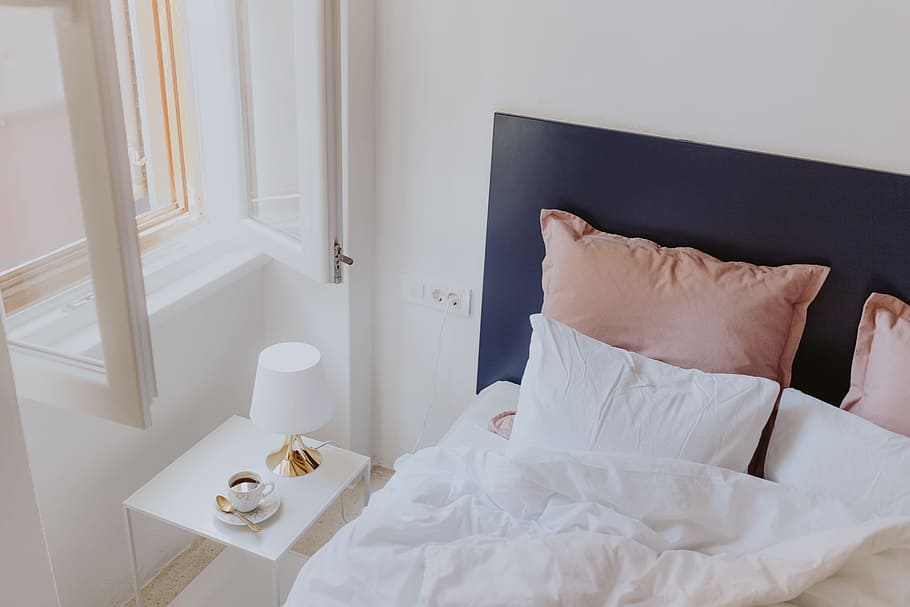You must have also searched for a bedding buying guide at night, because you feel at a loss when facing various terms like “Egyptian cotton”, “Tencel”, and “80-count pure cotton”. The professional terms for bedding are hard to interpret, and the promotions of merchants are even more dazzling. It’s time to break down this information barrier and return to the beddings itself. Whether you are choosing bedding for the first time or want to upgrade your present bedding configuration, this knowledge will help you make a wise decision. Let’s come together to make your every night’s sleep a true enjoyment.
Your Bedding Buying Guide Section on Materials & Quality
Whether you read any beding buying guide, they must tell you that our sleep quality is fundamentally related to bedding materials. The selection of fabric not only affects its appearance but also influences comfort, temperature, and durability. If you want to make the right selection, we need to penetrate marketing rhetoric and truly understand the fibre properties and thread count.
What is the Best Bedding Materials?
Sometimes we find that even the bedding recommended by the best bed buying guide may not be exactly suitable for you. Because the best bedding entirely depends on your demands, you should pay attention to the sleep temperature and skin sensitivity. There is no best material, but the most suitable for you. Flax, with its good breathability, has become the first choice for people who are afraid of heat. Bamboo fibre is more suitable for people seeking smooth tactility. And cotton is compatible with breathability, softness, and durability, becoming the most reliable all-around choice.
What is Thread Count?
For a bedding buying guide, the most indispensable thing is to explain what thread count is. Thread Count refers to the sum of warp and weft threads per square inch, which is the key to measuring bedding quality. But, it is also the most easily exaggerated indicator in home textile marketing. To help you identify authenticity, we will provide you with the international standards. According to standards like ASTM D3775 or ISO 7211-2, thread count should be based on the actual number of threads woven into the fabric. Many brands exploit a legal but non-transparent loophole by using Multi-Ply Yarn. For example, 300 double-ply threads may be misleadingly labelled as 600TC. This practice, while raising the number, compromises breathability, softness, and durability. Industry experts and high-end brands concur that the practical sweet spot for single-ply cotton fabric is typically between 400 and 600TC, which offers the best combination of breathability and smoothness. We suggest that, for products claiming over 800TC, you should avoid blindly pursuing the number. Instead, prioritise spending your budget on the quality and staple length of the cotton.
Is Egyptian Cotton Better Than Other Cottons?
When you’re reading a guide to buying bedding, you will find that they always recommend Egyptian Cotton. The reason why Egyptian cotton is regarded as the top luxury choice lies in its unique ELS characteristics. This fibre has over 35mm in length, which makes it unparalleled in softness, natural gloss, and super durability. But there are many counterfeit products. So, if you want to ensure that your investment is worth it, you can seek the official certification mark issued by the Egyptian Cotton Association (CEA) when purchasing. This association verifies the purity of the product through DNA traceability. You can also consider its main competitor: Pima. Pima cotton performs excellently due to its strict quality control. In a word, genuine ELS cotton (whether Egyptian cotton or Pima) is superior to standard cotton, but the authority of the certification mark is far more important than the name of origin.

Percale vs. Sateen: A Battle of Weaves
The weaving technique determines the core touch of bedding. Cotton bedding is mainly divided into Sateen and Percale two types. The sateen weave features closely arranged yarns, presenting a smooth texture and soft lustre. The fabric is thick and has excellent warmth retention, making it suitable for users who seek a warm and enveloping feel. The percale weave method, due to the large gaps between the yarns, creates a refreshing touch with excellent breathability. It is particularly suitable for consumers who pay attention to breathability and a cool body feel. These two weaving methods create completely different sleeping experiences: satin offers a warm and enveloping texture, while plain weave brings freshness and breathability.
Linen vs. Cotton
In most bed linen buying guides, they always compare linen with pure cotton. As two classic natural bedding fabrics, each has distinct characteristics. Flax is made from the fibres of flax stems. Its fabric structure is loose and breathable, with excellent moisture absorption and quick-drying properties. When first touched, it has a unique, dry and refreshing texture, and becomes increasingly soft and skin-friendly with use and washing. Pure cotton comes from the cotton boll, with fine and soft fibres. The fabric texture is skin-friendly, comfortable and has better anti-wrinkle properties, making it more convenient for daily care. If you are in pursuit of ultimate breathability and a texture experience that changes over time, linen is the ideal choice. If you value the immediate soft touch and easy daily maintenance more, pure cotton is a safe choice. Both of these materials have good durability. The difference lies in that linen is more suitable for people with a tendency to sweat easily and those who pursue a natural texture, while pure cotton is more suitable for users who pay attention to daily comfort and convenience.
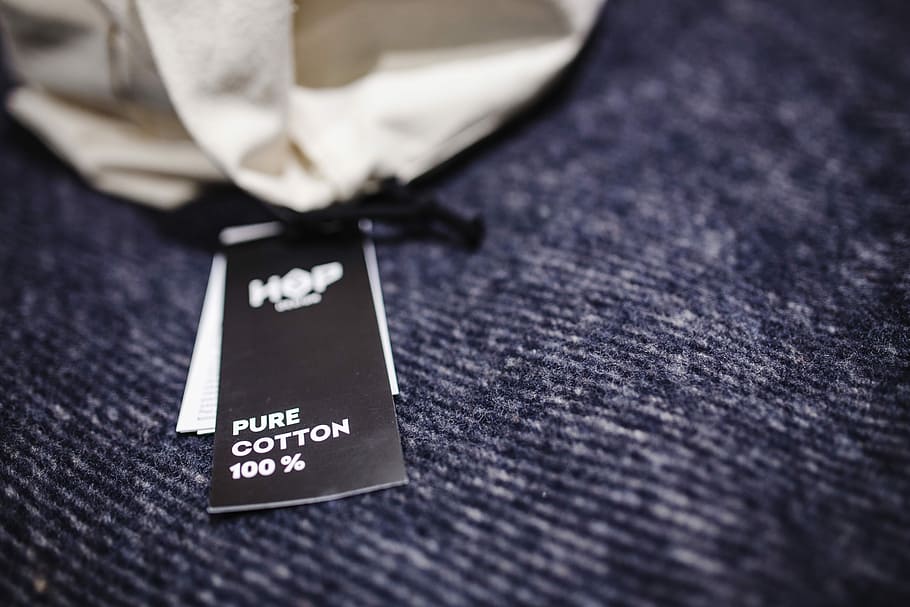
Bamboo Fibre: Eco-Friendly & Soft
Bamboo fiber bedding is famous for its silky soft touch and excellent breathability. The micro-porous structure inside its fibers endows it with excellent moisture absorption and sweat-wicking capabilities and natural antibacterial properties. These properties make it suitable for people with sensitive skin and those who sweat easily. In terms of environmental protection attributes, bamboo fiber raw materials come from fast-growing plants and have the characteristics of being renewable and using less pesticides. However, it should be noted that the mainstream production process requires chemical dissolution to process bamboo pulp into fibers. If you are concerned about ecological impact, it is recommended that you choose products that have passed the OEKO-TEX® certification or adopt a closed-loop production process (recyclable chemical solvents). Only in this way can a true win-win situation of environmental protection and health be achieved.
The Beauty Benefits of a Silk Pillowcase
Few bedding buying guides will clearly tell you that the beauty value of silk pillowcases stems from their unique physical properties. Its smooth surface can effectively reduce the friction between hair and pillowcase during sleep, thereby helping to relieve frizz, breakage and creases when waking up. It is particularly friendly to curly hair and hair damaged by dyeing and perming. Meanwhile, the low hygroscopicity of silk helps retain the natural oils and moisture of the hair, preventing it from absorbing nutrients from the scalp as cotton pillowcases do. Long-term use can improve the problem of dry hair. In terms of skin care, skin-friendly properties of skin can decrease pressure and friction on the face, preventing the formation of wrinkles. Its material is mild, and it’s not easy to breed mites. What’s more, its anti-static properties can reduce dust adhesion to provide a cleaner and more comfortable sleeping environment.
Bed Buying Guide UK Focuses on Sizing & Specifications
| Mattress Name (UK Standard) | Size(cm) |
|---|---|
| Small Single | 75 × 190 |
| Single | 90 × 190 |
| Small Double | 120 × 190 |
| Double | 135 × 190 |
| King | 150 × 200 |
| Super King | 180 × 200 |
How Do I Know What Size Bedding I Need?
If your bedding is bought in the UK, you can directly match it according to the above standard sizes. However, if you buy it from the UN, the United States, or Australia, as they adopt different size standards, you need to check its size data, avoiding buying it based on the UK size. If you are a newly arrived international student in the UK, you should pay more attention to this point. But, it will be much more convenient if you are about to move into a student accommodation in the UK. Many student accommodations have prepared exclusive sets of bedding that fit the dimensions of British bedding for freshmen, eliminating the trouble of selection. If you want to use the bedding you have selected, you can check the official website or directly contact the student accommodation customer service to obtain accurate data.
Should Your Duvet Be Bigger Than Your Bed?
Should Your Duvet Be Bigger Than Your Bed is a common question in bed buying guides in the UK. For users of shared beds (especially those with double-size or larger beds), the answer is yes. The quilt is one size larger than the mattress to provide the necessary Overhang, which is the key to enhancing sleep comfort. This extra size can effectively prevent the problem of couples fighting over the quilt at night and ensure that the edges of the quilt can effectively block the intrusion of cold air. Although this will require you to purchase larger-sized quilt covers and may increase the difficulty of laundry, this investment is the most effective and simple way to eliminate sleep disturbances and optimize the sense of wrapping.
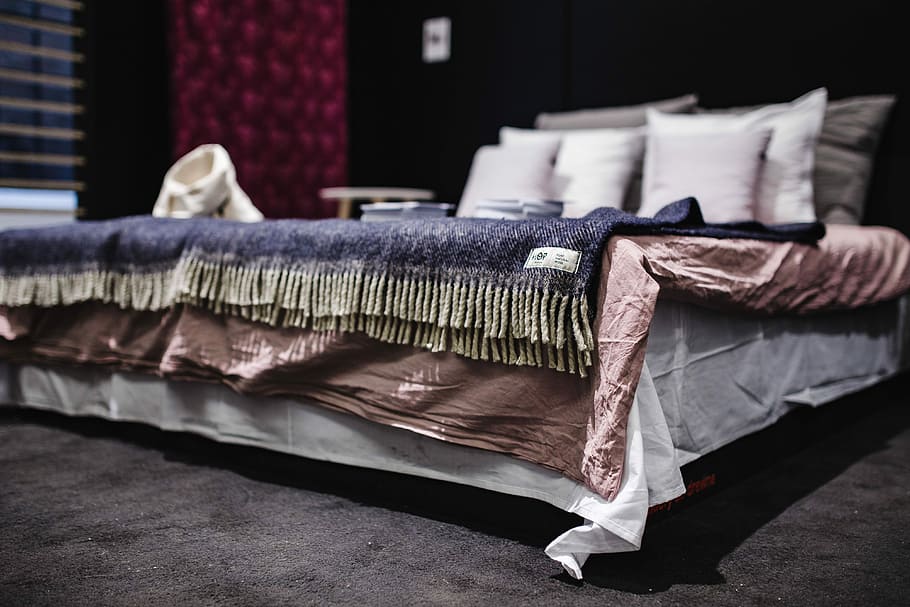
Do You Need Separate Summer & Winter Duvets?
Tog value is an international standard to measure the thermal resistance and thermal performance in the UK bedding market. To cope with temperature changes throughout the year, you need different quilts with different tog ratings. Both too cold and too hot can affect your sleep. Therefore, choosing the appropriate insulation level is the key to ensuring an optimal body temperature.
Guide to Buying Bedding Types & Styling
| Type | Common UK Styles | Primary Function |
|---|---|---|
| Mattress | Pocket Sprung, Memory Foam, Hybrid, Open Coil | Provides support and comfort for sleep. |
| Mattress Protector | Quilted, Waterproof, Deep-Fitted | Protects the mattress from stains, spills, and wear. |
| Fitted Sheet | Deep-Fitted, Jersey, Percale, Sateen | Stretches to tightly cover the mattress and provide a clean surface. |
| Flat Sheet | Used as a smooth layer between the sleeper and the duvet/blanket (less common in the UK than US). | |
| Pillow | Standard, Firm Orthopaedic, Soft Down/Feather | Supports the head and neck to maintain spinal alignment. |
| Pillowcase | Housewife, Oxford, Square | Protects the pillow and allows for easy washing. |
| Duvet | Feather & Down, Hollowfibre, All-Seasons | Provides the main layer of warmth, rated by Tog value. |
| Duvet Cover | Printed, Embroidered, Plain Dye, Reversible | Protects the duvet, provides decoration, and is easy to clean. |
| Throw / Blanket | Knitted, Faux Fur, Fleece, Woven | Provides extra warmth or serves as a decorative accent at the foot of the bed. |
Sheets: Flat vs. Fitted
Many bed sheet buying guides often offer two different bed sheets, including fitted sheets and flat sheets. Fitted has elastic bands around the perimeter that tightly wrap around the mattress, preventing shifting during use. It is suitable for users who are seeking convenience and neatness. Flat requires tucking under the mattress for securing. The flat needs to be folded and pressed under the mattress to be fixed. Although it takes a little time to lay, it is flexible in use. It can be used as a bed sheet, a summer quilt or a sofa blanket. A common practice is to use them in combination: use a bed cover as the bottom layer to ensure stability, and then lay a flat sheet as the close-fitting layer, which takes into account both practicality and comfort.
Pillowcases: Oxford vs. Standard
In the UK guide to buying bedding, we always see two types of pillowcases. The standard style adopts a clean piped edge design, and its appearance is smooth and neat, which is suitable for users who are pursuing a minimalist style. The Oxford style features a decorative flange (or bordered edge) along the rim, which creates a structured and refined visual effect. It is more suitable for classical and luxurious styles. Their core differences lie in decorative details, and there is no difference in their daily usage functions. You can select according to your bedroom style.
How Many Pillows?
The number of pillows should give consideration to health and decoration, the bedding buying guide always says so. From a health perspective, one or two pillows are enough to support your head and neck. Too much will affect the health of the cervical spine. On this basis, you can add some decorative pillows according to the bed size. But, please avoid overstacking and ensure the balance between practicality and aesthetic pleasing.
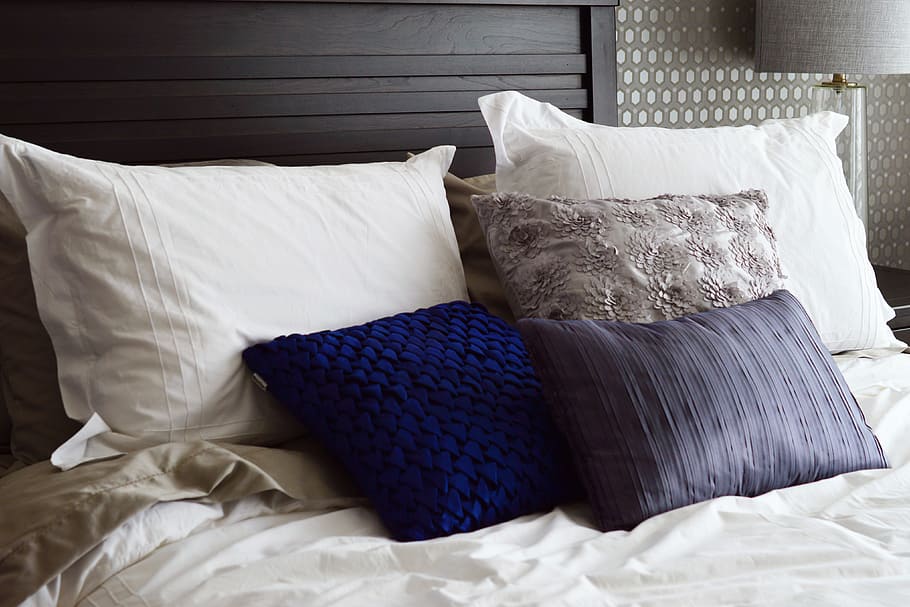
Bedding Buying Guide: How to Choose Your Bed Sheet & Where to Buy
Having mastered the core knowledge of bedding from the above bed buying guide UK, the next step is to put these theories into practice. Below is the purchasing guide and reliable channels we have compiled for you, helping you easily complete the entire process from “knowing how to select” to “knowing how to buy”.
How to Choose Bedding?
When buying bedding in the UK, you can consider the following five parts to find the most suitable option for you:
- Material Determines Feel
- For coolness and breathability: prioritise linen, percale cotton
- Prefer silky warmth: consider sateen cotton, silk
- Need balanced durability: high-quality long-staple cotton (Egyptian/Pima cotton)
- Focus on eco-friendly features: certified organic cotton/bamboo fiber produced through eco-friendly processes
- Weave Affects Texture
- Percale: provides a crisp, breathable “shirt-like feel”
- Sateen: delivers a smooth, lustrous “silk-like sensation”
- Knitted: offers an elastic, soft “T-shirt comfort”
- Precise Size Measurement
- Measure mattress length, width, and thickness (especially when buying fitted sheets)
- Duvets are recommended to be one size larger (e.g., a double bed with a king-size duvet)
- Pay attention to the size standard differences between countries
- Details Reflect Quality
- Check stitch density (no less than 10 stitches per inch)
- Observe fastener durability (buttons/ties)
- Confirm zipper smoothness (YKK is preferred)
- Maintenance Cost Considerations
- Confirm washing requirements (silk/wool requires professional care)
- Understand the shrinkage rate (pre-shrunk products are more stable)
- Assess colour fading risk (two-colour wash test)
Where to Buy Great Bedding?
| Channel Type | Recommended Retailer | Key Features |
|---|---|---|
| Department & General Stores | John Lewis & Partners | Iconic British high-end department store. Offers reliable, quality products across different price points. Known for durability and excellent customer service. |
| M&S (Marks & Spencer) | Long-established trusted brand. Home furnishings are known for good quality, simple designs, and a wide choice of materials at mid-range prices. |
|
| Argos | One of the largest online and catalogue retailers in the UK. Offers a vast product range with great value for money (high cost-performance). |
|
| Specialist Home & Premium Brands | The White Company | Known for high comfort and muted colour palettes. Uses natural, soft materials to provide a five-star hotel feel experience. |
| IKEA | The familiar Swedish giant. Offers minimalist, practical, and affordable Scandi-style bedding. Great for online browsing and self-assembly items. |
|
| Silentnight | A long-trusted UK sleep brand (over 75 years old). Specialises in mattresses, beds, and winter bedding, focusing on sleep science. |
|
| Trend & Design Brands | Urban Outfitters | US-based trend brand. Bedding designs are unique, artistic, and youth-focused, suitable for consumers seeking a distinctive bedroom style. |
| Amara | A luxury British homeware retailer. Curates high-end and niche designer products, ideal for those seeking opulent and artistic pieces. |
|
| High Street & Budget Retailers | Wilko | A popular high-street chain focusing on home and lifestyle essentials. Products are good value and cheap, ideal for students or buying everything in one go. |
Bed Buying Guide UK to Avoiding The Top 10 Mistakes
When choosing bedding from a bedding buying guide, knowing how to avoid traps is a more efficient “shortcut” than mastering all the knowledge. Next, we will reveal to you the most common and costly mistakes.
Prioritising Price Over Quality
Mistake: Buying based purely on a low price, resulting in uncomfortable and non-durable fabric.
Solution: Invest in high-quality natural materials (e.g., Egyptian Cotton, Linen), viewing it as an investment in long-term sleep health.
Ignoring Bedding Size Standards
Mistake: Incorrect sheet or duvet cover sizing leads to slipping, bunching, and frustration.
Solution: Carefully measure your mattress and confirm the correct UK/EU/US standard; buy “deep fit” sheets for thick mattresses.
Blindly Chasing Ultra-High Thread Counts (TC)
Mistake: Assuming $1000+$ TC is best; it can feel heavy and stiff, and may be misleading due to multi-ply yarns.
Solution: Focus on cotton quality and the single-ply thread count ($400-600$ TC is optimal); prioritise long-staple cotton.
Overlooking Weave’s Impact on Feel
Mistake: Only considering the fibre (cotton) but ignoring the weave (Percale/Sateen), which affects temperature and texture.
Solution: Choose based on preference: Percale (plain weave) for a cool, crisp feel; Sateen for a smooth, warm, and lustrous feel.
Disregarding Care and Maintenance Costs
Mistake: Purchasing delicate fabrics that require high-maintenance or specialised cleaning (e.g., dry cleaning).
Solution: Check the care label before buying; opt for durable, machine-washable fabrics for hassle-free maintenance.
Falling for Short-Lived Trends
Mistake: Selecting highly fashionable patterns or colours that will quickly look outdated in the bedroom.
Solution: Choose timeless neutrals or white for core bedding essentials, using easily replaceable decorative accessories (throws, cushions) for seasonal style.
Ignoring Personal Temperature Preference
Mistake: Failing to recognise if you are a “hot” or “cold” sleeper, leading to night sweats or chills.
Solution: Hot sleepers should choose Linen or Bamboo; Cold sleepers should opt for Sateen cotton or Flannel to regulate warmth.
Skipping a Mattress Protector
Mistake: Exposing the mattress to stains, sweat, and allergens significantly reduces its lifespan.
Solution: Invest in a high-quality, breathable, and waterproof protector to safeguard your mattress and ward off dust mites.
Lack of Layering and Decorative Mindset
Mistake: The bed looks flat and uninviting, failing to create a cosy, luxurious sleep haven.
Solution: Add visual and tactile dimension by layering different pillows, cushions, and throws to enhance overall comfort and style.
Failing to Check Return/Trial Policies
Mistake: Buying online without a risk-free trial, leading to being stuck with unsatisfactory products.
Solution: Prioritise brands that offer a free trial period or a clear free return policy, and always check customer reviews for quality feedback.
Guide to Buying Bedding: Essential Care and Maintenance
When considering a bedding buying guide, remember that the high-quality bedding you invest in needs proper maintenance to remain as good as new for a long time. The right care and maintenance is not only about hygiene, but also about bedding’s service life and your sleeping experience. You should follow the following principles. Firstly, check the care label before washing and use a mild non-bleach cleaner. Secondly, wash bed sheets and pillowcases using cold water or 30°C water every week, avoiding fibre damage. Thirdly, the quilt core and pillow core need to be washed regularly every 4 to 12 months. More importantly, please make sure they are totally dry. Don’t worry if you are an international student and live in a student accommodation in the UK. You can also easily find laundry facilities, which can conveniently keep your bedding clean. Follow these important steps, and you can keep your beloved bedding for a long time.
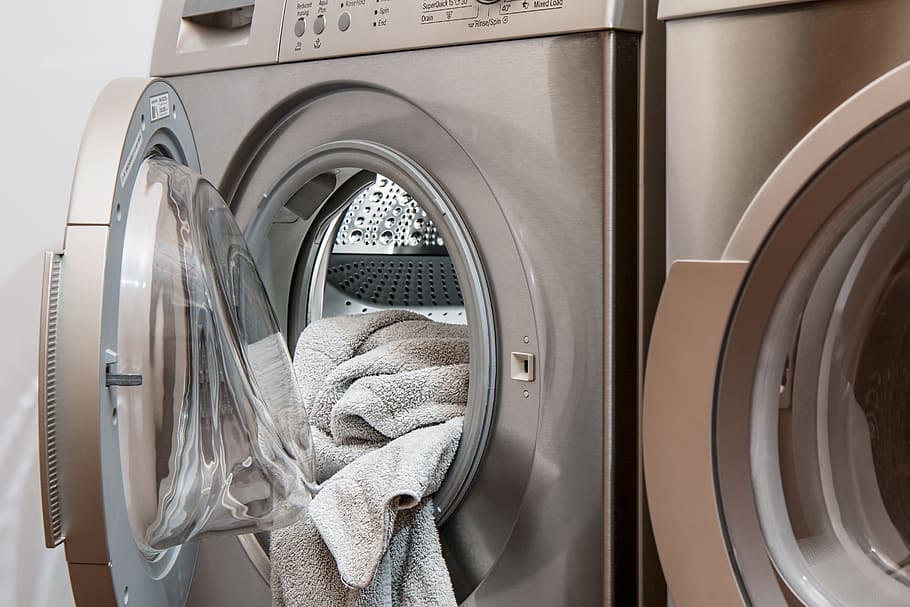
Conclusion about Bedding Buying Guide
After reading this bedding buying guide, you have mastered the core knowledge of choosing high-quality bedding. Please remember that investing in a good set of bedding represents an emphasis on your daily sleep. It is also a long-term investment in your own health. Now, I believe you can independently choose a set of bedding.
FAQs about Bedding Buying Guide
What is a coverlet for a bed?
A Coverlet is a lightweight and usually non-flip decorative bedding item. It is thinner and lighter than a down quilt and stiffer than a blanket. It is mainly used to add decorative layers and provide a little warmth to the bed. It is usually made by weaving or quilting techniques.
Main features
- Moderate length: Usually only reaches the middle of the mattress and does not touch the ground (unlike the spread of a Bedspread).
- Functionality: Mainly used as a decorative layer on bed sheets or as a lightweight and warm blanket in summer.
- Structure: Mostly woven or quilted designs, without heavy fillings.
Common usage scenarios
- Decorative layering: It is used to pair with fluffy down quilts to create a refined sense of layering in the bedroom.
- Minimalist style: It can replace the traditional heavy bedspread and create a modern and simple bedroom aesthetic.
- Lightweight and warm: Suitable for use alone in air-conditioned rooms or in warm weather.
Is Egyptian cotton better?
Yes, authentic Egyptian cotton is usually superior to many standard cottons, but the premise is that it must be certified.
Why is it the best choice?
Extra long staple fibres (ELS): Egypt’s Nile Delta has a unique climate, which can produce longer cotton fibres than ordinary cotton. This makes fibres tougher and more durable.
Superior softness: Long fibres can be spun into finer yarns. Even at high yarn density, it can maintain excellent softness and a smooth touch.
High breathability: It has excellent breathability and helps which away moisture and regular sleep temperature.
Purchase reminder:
For daily use, you need give preference to Egyptian cotton products with a yarn density of 300 to 500 counts.
What to look for in bed sheets?
When choosing bed sheets, the following five core dimensions should be given particular attention:
Material priority
- In summer or for those with a tendency to sweat easily: Linen or pure cotton plain weave is the first choice
- All-season suitable/For touch: Choose long-staple cotton satin (Egyptian cotton/Pima cotton)
- Sensitive skin: Consider certified organic cotton or bamboo fiber
Interpretation of Key Parameters
- Yarn count density: Select single-strand yarn of 300 to 500 counts
- Weaving method classification:
Plain weave: Breathable and refreshing (suitable for people who are afraid of heat)
Satin: Smooth and warm (suitable for cold seasons)
Verification of process details
- Suture density: No less than 10 stitches per inch
- Fastener system: Envelope-style pillowcases with strap fasteners are preferred
- Bed cap elastic band: The width should be ≥5cm, and it should have an anti-slip design
Practical purchasing tips
- Touch test: Observe the recovery speed after rubbing the fabric (high-quality cotton recovers quickly)
- Light transmission inspection: Observe the uniformity of the yarn against the light source
- Washing tip: The dimensional shrinkage rate after the first wash should be less than 5%
Precise size matching
- Measure the thickness of the mattress
- Check the size standards when shopping overseas
- It is recommended to buy bed sheets one size larger
Which is the best bed linen websites?
John Lewis & Partners:
Features: A traditional high-end department store in the UK, offering a wide range of brand choices from budget to luxury. It is renowned for reliable quality and strong customer service.
Key words: Wide selection, reliable quality, traditional retail.
The White Company:
Features: Focusing on classic and luxurious white and neutral-colored bedding. Its high-count Egyptian cotton and goose down products enjoy a high reputation in the British market.
Key words: Classic luxury, hotel-style, high count cotton.
Marks & Spencer (M&S):
Feature: One of the most cost-effective choices. Its Egyptian cotton and linen series are of reliable quality and are a popular choice for budget-conscious consumers.
Key words: High cost performance, reliable quality, popular among the masses.
Parachute Home:
Features: Renowned for its high-quality Lined and environmentally certified OEKO-TEX) cotton. A 60-day probation period is provided.
Keywords: High-quality flax, environmental protection certification, no middlemen.
Brooklinen:
Features: A leader in the field of online direct selling. Its Luxe Sateen and Classic Percale series are bestsellers and there are often promotional activities.
Key words: D2C model, high cost performance, 365-day guarantee.
Piglet in Bed:
Features: Focusing on natural and soft French linen bedding, with a unique color selection that caters to the casual style of modern British homes.
Keywords: Focus on linen, natural style, British design.
What thread count is best for bed sheets?
The optimal thread count range for bed sheets is 300-500, but fabric quality and weave technique are ultimately more important than the number itself. Here’s a practical guide:
The Sweet Spot
300-500 TC (single-ply yarns)
Made with long-staple cotton (Egyptian/Pima)
Delivers the perfect balance of softness, breathability and durability
Key Considerations
Beware of inflated numbers
Claims of 600+ TC (particularly 800-1000) often use multi-ply yarns
This creates a heavier, less breathable fabric that may feel like plastic
Quality over quantity
400 TC premium cotton outperforms 1000 TC inferior cotton
Focus on fibre length and weave type rather than chasing numbers
Weave matters
Percale (300-400 TC): Crisp, cool and breathable
Sateen (400-500 TC): Silky, warm and lustrous
Professional Advice
Prioritise products labelled “single-ply” and “long-staple cotton” in the 300-500 TC range. Test by holding fabric to light – it should show even texture and minimal pinholes. Remember: your skin’s comfort is the ultimate judge, not the tag number.
What's the best bedding brands UK?
The best bedding brands in the UK include: The White Company, John Lewis, and Ralph Lauren Home in the luxury classic category; M&S, Next, and Dunelm known for high cost-effectiveness; and Soak&Sleep, Buffy, and Brook + Wilde specialising in innovative solutions. Whether you seek premium comfort, practical value, or specialised functionality, there’s a perfect match for your needs.
- The White Company
Nationwide premium lifestyle brand celebrated for minimalist tones and delicate textures
Specializes in long-staple cotton and linen materials - John Lewis & Partners
Established department store brand with guaranteed quality
Comprehensive range from entry-level to premium selections - Ralph Lauren Home
Luxury lifestyle label
Perfectly blends classic aesthetics with premium Egyptian cotton - M&S
Trusted national brand
Outstanding value in basic cotton and flannel products - Next
Combines fashionable designs with reliable quality
Ideal for consumers refreshing their bedroom style - Dunelm
Home furnishing specialist
Extensive product range at accessible prices - Soak&Sleep
Online bedding specialist
Excels in high-quality duvets and pillows - Buffy
Eco-innovation pioneer
Focuses on eucalyptus fiber and sustainable materials - Brook + Wilde
Premium sleep solutions expert
Emphasises technological innovation and ergonomic design




